B-on Pelkan electric van review (2024)
The B-On Pelkan is a new entrant to the electric van market but it feels a bit like the warm-up act
PROS
- High payload for an electric van
- Choice of two battery options
- Pricing set to be competitive
- B-On will manage your energy usage
- Simple range with no need for add-ons
CONS
- Electric range not up with class best
- Very unusual side door arrangement
- High loading lip
- Basic cabin with low level of kit
- Unknown brand in the UK
Summary
The B-On Pelkan is one of several electric commercial vehicles from new brands that have attempted to make it to the UK market. Unlike plenty of the others that have tried of late, though, B-On has made it to the point where you can drive and buy one. Now it’s looking to take on the best medium vans out there.
The company’s back story is slightly complicated, but the short version is that plenty of the people involved worked on the Streetscooter electric vehicles that were used by DHL in Germany. This means there is some EV knowledge and experience behind the company as it gears up to launch a range of new vans under the B-On brand.
The Pelkan isn’t exactly a brand-new vehicle, though. It’s a modified version of a Chinese van, specifically the Karry Dolphin. Karry is a brand founded by major Chinese manufacturer Chery, which is also behind the Omoda 5, which is also heading to the UK. So, while B-On might be a new name, this is not a vehicle that has been thrown together by an inexperienced start-up.
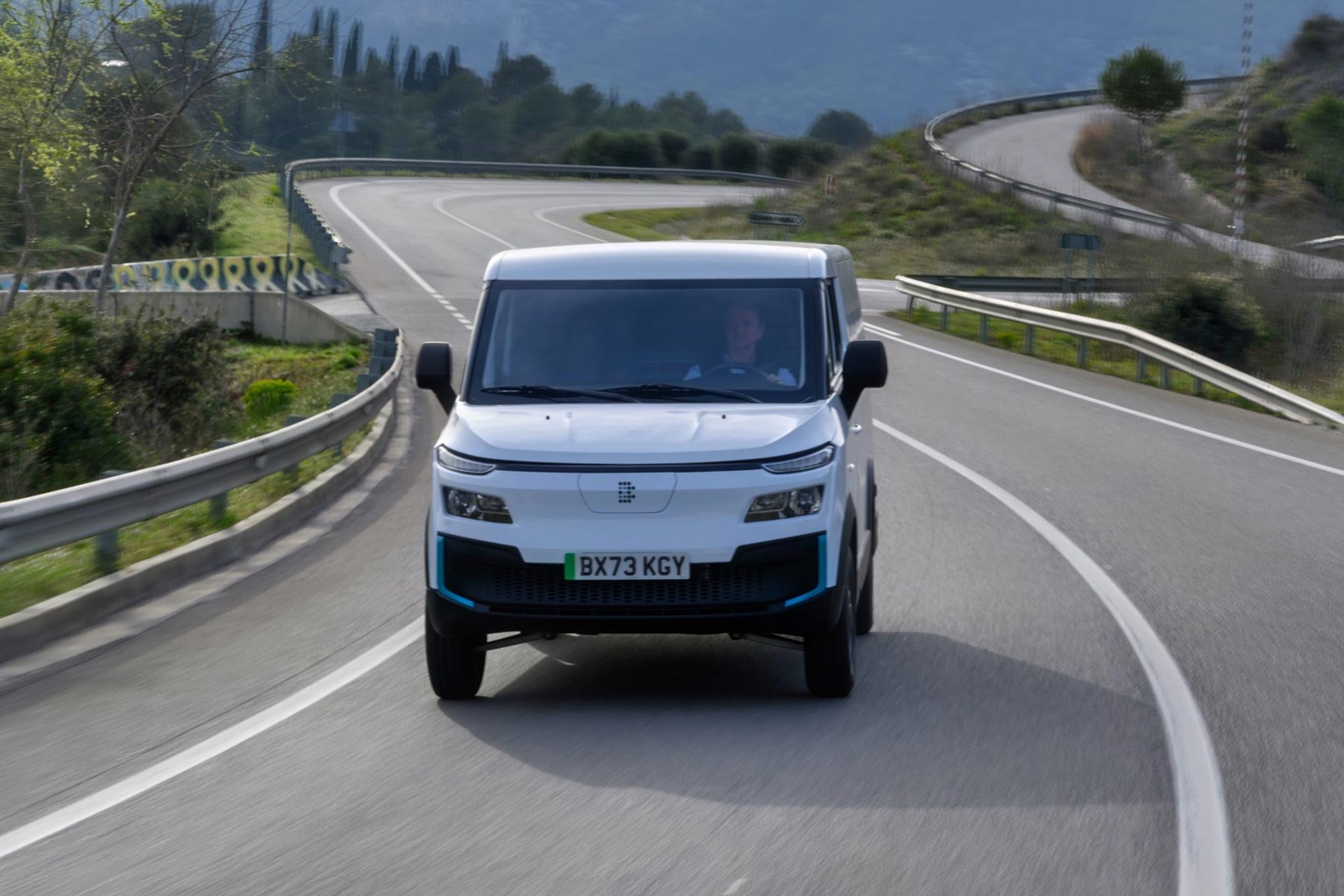
There are strong similarities between the Pelkan and the Karry Dolphin, as everything from the cabin backwards is shared between the two. It’s at the front where B-On has concentrated its efforts, with tweaks to the styling and some updates to the cabin at the front the main changes.
B-On is treating the Pelkan very much as its first van – it has a second one planned for around 2026. This van is being launched to help get the company going, build brand awareness and get some sales under its belt.
What are the B-On Pelkan’s rivals?
Size wise, the Pelkan fits into the medium van class, so it goes up against some of the biggest selling models in the UK. At 5,457mm long and 2,047mm tall, it is much the same size as an L2H1 Ford Transit Custom.
This means that it will also face off against the Stellantis mid-size vans, which all offer an electric version. This group comprises the Citroen e-Dispatch, Fiat E-Scudo, Peugeot e-Expert and Vauxhall Vivaro Electric. The Toyota Proace Electric is much the same vehicle, too, but comes with a superior 10-year warranty.
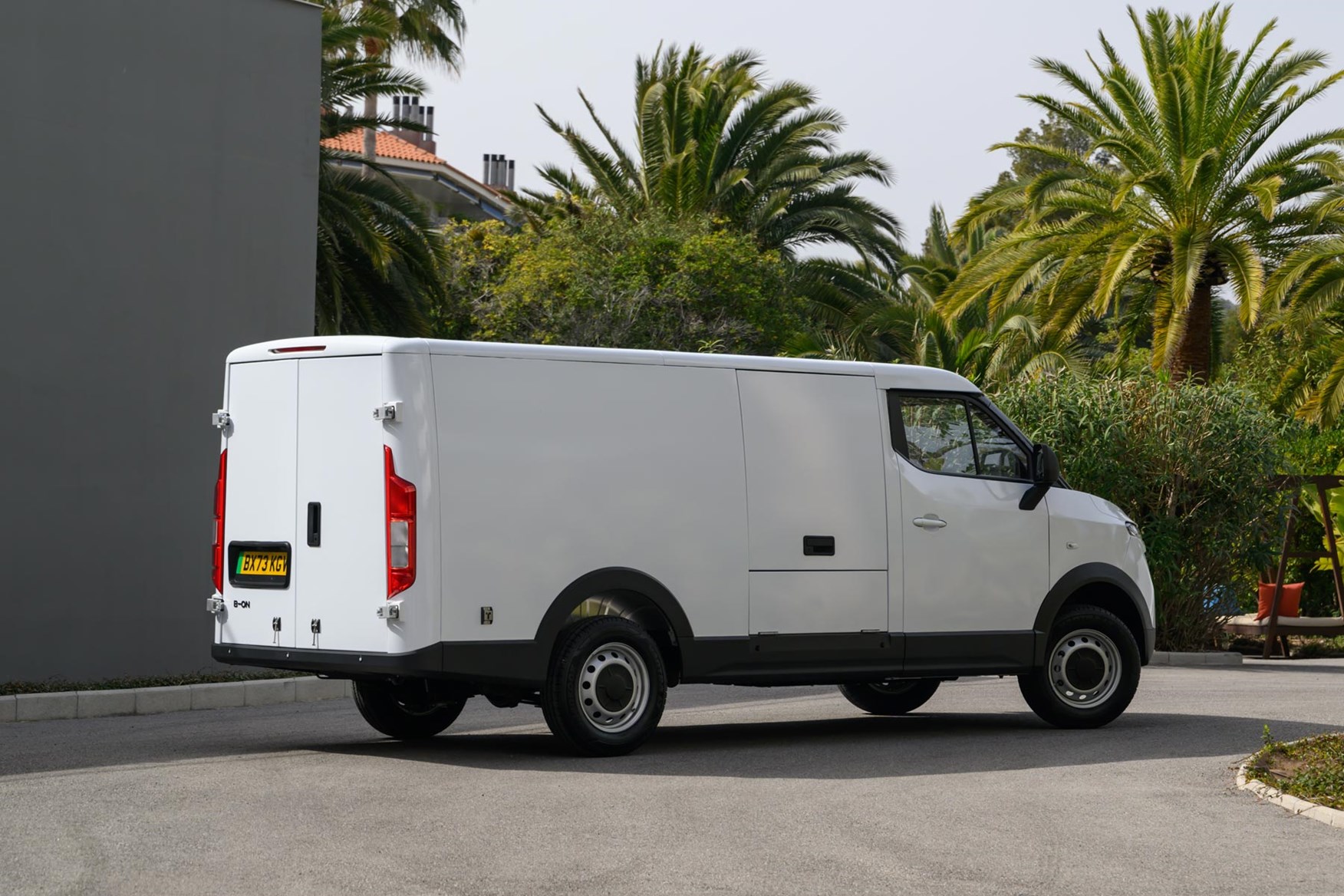
Other contenders include the Mercedes-Benz eVito, Renault Trafic E-Tech and the forthcoming Volkswagen Transporter. Perhaps the closest manufacturer in terms of approach is Maxus, which also takes Chinese vehicles and gives them a European twist. The Maxus eDeliver 7 is the model that is the nearest equivalent.
What versions of the B-On Pelkan are there?
There is only one body of the Pelkan offered, but there are two different battery options that come with a few slightly odd quirks. There is a 43kWh and a 54kWh version, with respective ranges of 140 and 173 miles Both are rear-wheel drive, but the model with the larger battery has its motor and running gear at the rear whereas that all sits at the front in the 43kWh van.
The rear body is the same on both vans, with a 7.1m3 cargo space, but the different batteries mean a slight variance in payload. The smaller battery offers 1,375kg of payload, while the 54kWh provides 1,290kg.
In both cases, this is an excellent payload – most rivals in the medium-van sector only manage around 1,000kg.
Verdict: is the B-On Pelkan any good?
The Pelkan is not like most other medium electric vans and it looks set to come with a price-tag that will undercut its main rivals. It promises a great amount of space and payload for the money.
B-On will also help out with your fleet and charge management, even if you have vehicles from other brands on your books. It will take your data and help analyse it, while it will also help you best set up your battery management, energy storage and charging. Handy.
However, it’s not quite as simple as that as there are a few compromises to look past too. The cabin is remarkably basic with a real tacked-on feel to some of the elements, the range is poor compared to others in the class that are now capable of more than 200 miles between charges and then there is that unusual loading-bay door arrangement and high floor.
Oh, and if you want to buy one then B-On will only be selling to fleets to start off with, so sole traders will have to wait for them to emerge onto the used market, or until the second van appears in 2026.
There are enough signs from B-On to show that the team might have something to offer, but this rebadged Chinese van is not the ground breaking vehicle that best showcases that. Hopefully it will enable the company to make it through until it can produce something of its own creation.
Skip to our full verdict on...
- Simple and basic driving experience
- No driving modes, little cab adjustment
- Firm ride, good visibility
The B-On Pelkan takes a remarkably basic approach to how it drives, with very little in the way of frills or clever systems. Starting it up is a simple turn of a key – there are no keyless-start buttons here.
The drive-selector dial, which acts as a gear lever, only has three options – Drive, Neutral and Reverse, with no Park as there is on most vehicles. Then it is a simple press and go affair, with the accelerator giving gently progressive speed and the brakes consistent and firm rather than overly sharp or too soft.
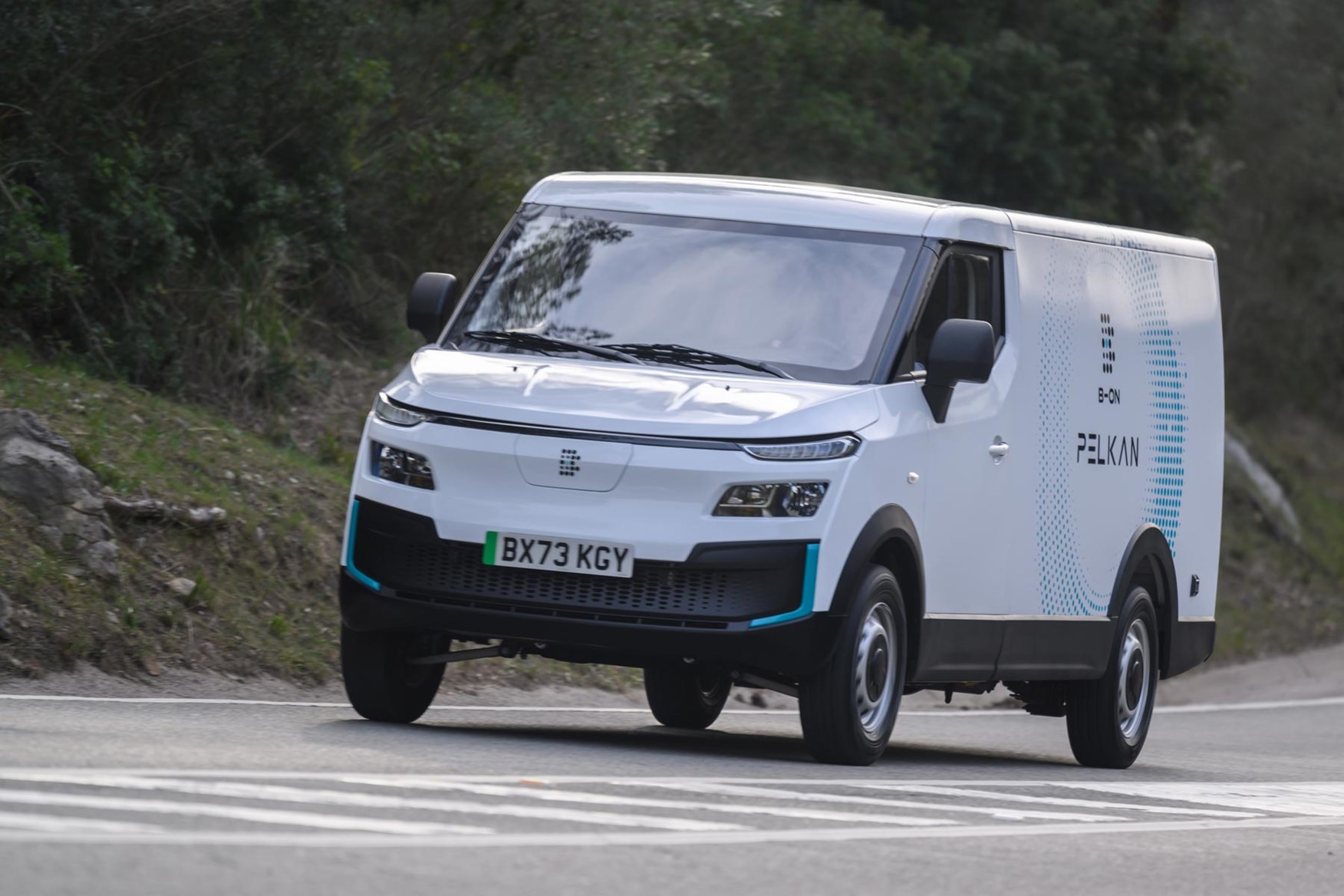
So far, so good. However, that’s about it. There is no way to boost the brake regeneration or to change the driving modes, as you can in pretty much any other modern electric vehicle. This means you can’t boost the power levels for increased performance or dial them back to increase the range. Everything is down to you, your right foot and how heavy you are with it.
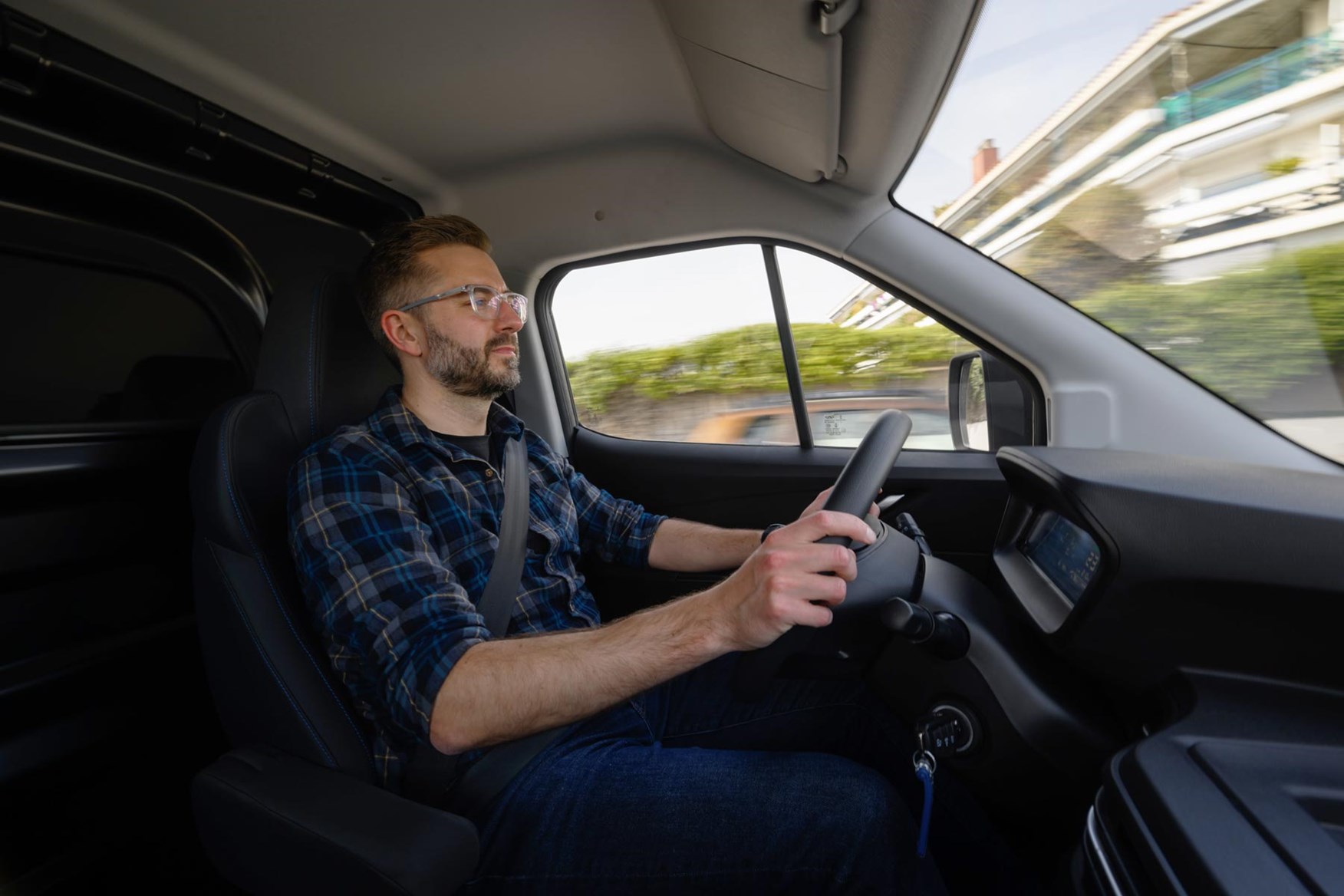
While our experience behind the wheel suggested that it isn’t slow, and it has some of the swift acceleration that is characteristic of electric vehicles, it isn’t blistering rapid either – a nice balance in short. With 116hp of power, it promises plenty, on paper, to deal with bigger payloads as well.
Steering and ride
The suspension on the Pelkan is on the firm side but not overly so. Just to the extent that it is can be a little bumpy over the harsher obstacles in town, but it stops short of crashing over them and therefore jolting you and the contents of the loading bay around.
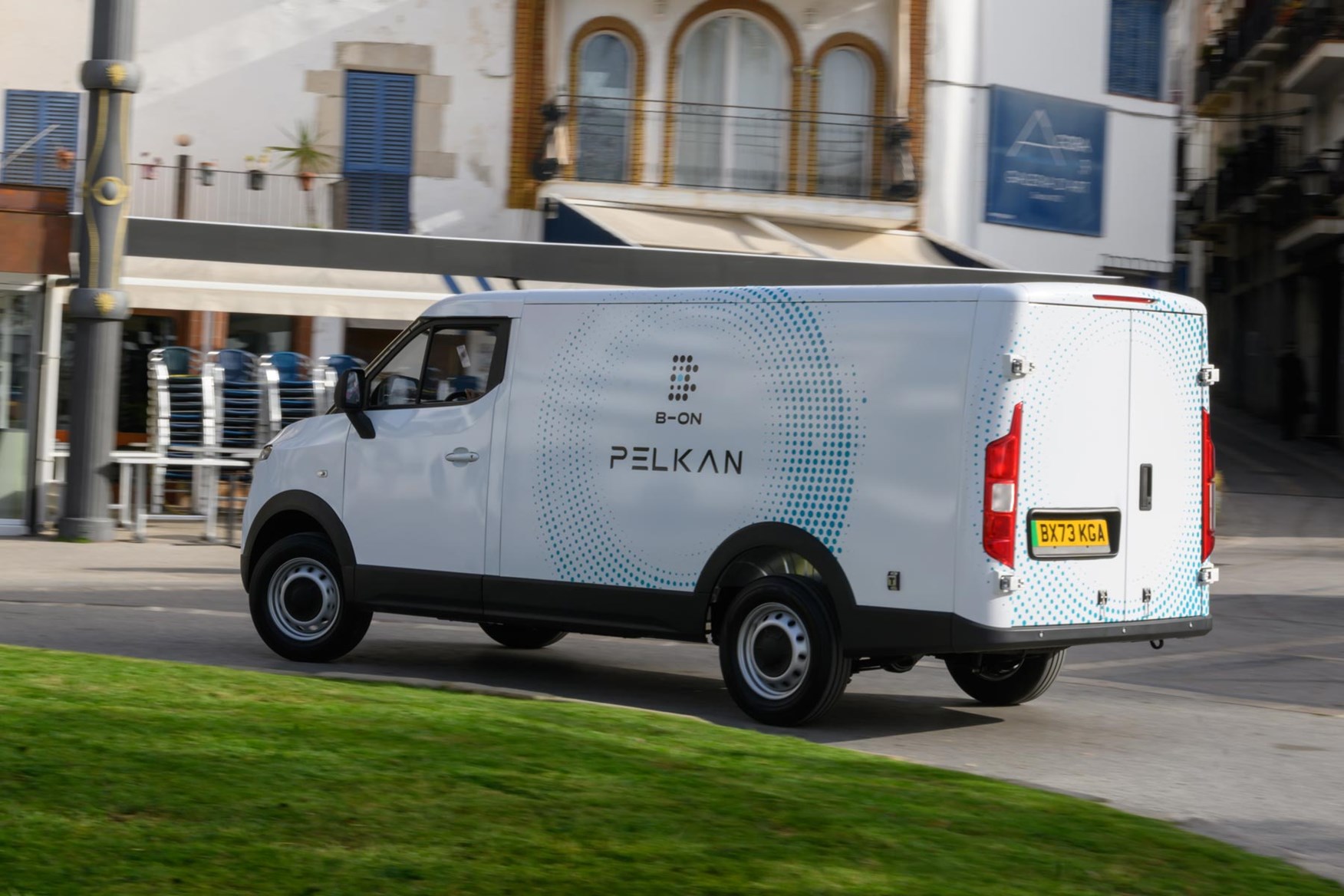
The steering is also nicely weighted and has enough self-centring to make it easy to get around town at low speeds. We only had a go at these lower speeds, though, so whether it feels as well weighted on prolonged motorway drives is another matter.
There are some oddities, though, which will take some adjusting to. The indicators don’t self-cancel for example, which means you will have to take control of that element too. What you do get is a great level of visibility, thanks to the large windows and narrow pillars between the front window and the screen. That and the relatively short bonnet make it easy to place on the road.
- Basic low-rent cabin with little storage
- Very little adjustment for the driver
- Odd features in the loading bay
The cabin is another area where the Pelkan takes a fairly simple approach. The plain dash is perhaps the most obvious example of this, but there are other areas where a little more luxury would be a welcome feature.
The best example of this is the driver’s seat and steering wheel. There is very little adjustment for either, meaning that there is likely to be a degree of compromise for almost everyone when it comes to finding an ideal driving position.
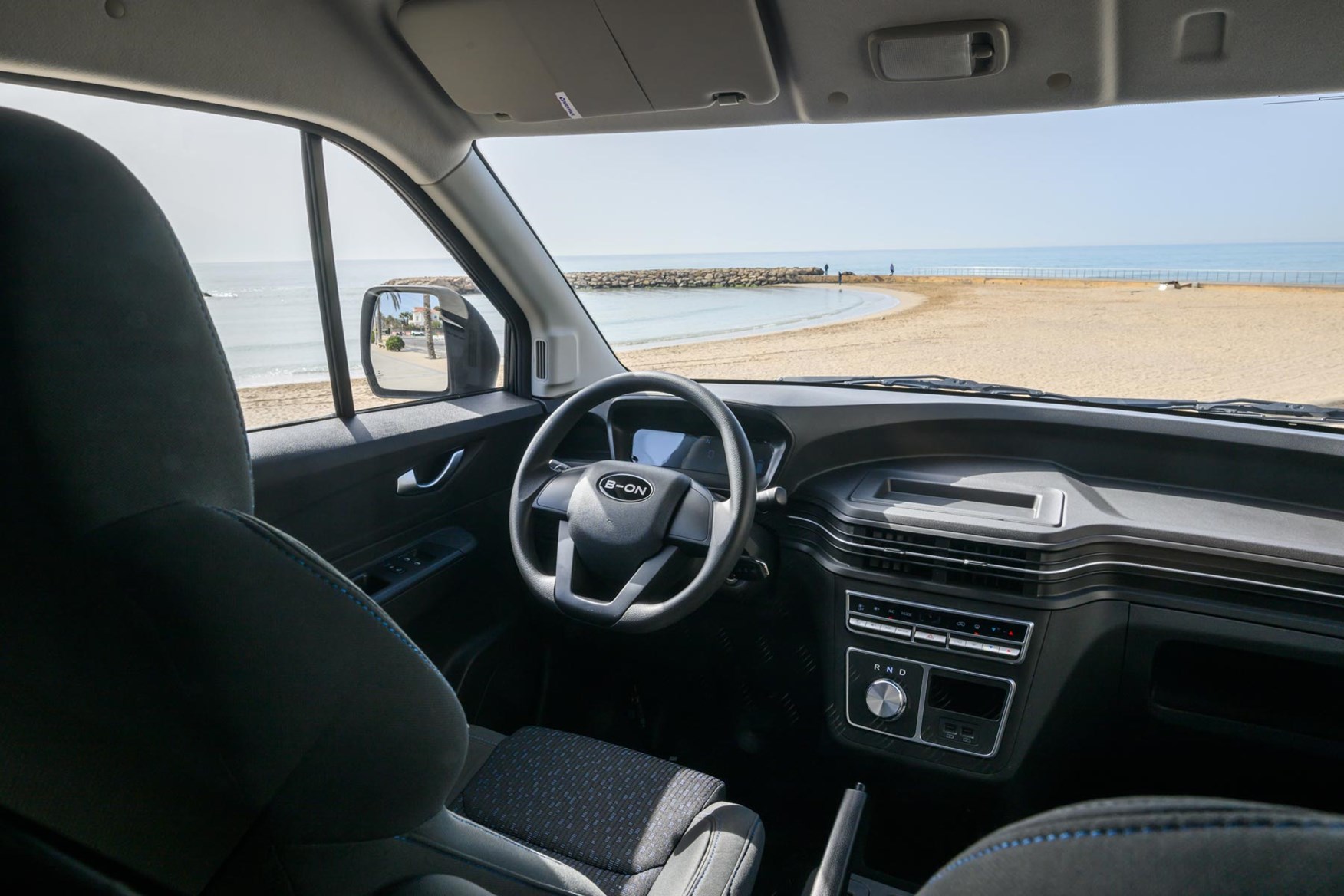
It’s a real rarity in this day and age to have a steering wheel that doesn’t go in and out, for example, and you can only move the seat forward and backwards and adjust the angle of the backrest. This is an annoyance to start off with, but could become a bigger issue if you spend all day behind the wheel and are sensitive to such things.
Very little storage
What’s also apparent is the lack of storage. There is hardly anything in the way of big bins around the cabin, with only a small spot in the door and a little compartment between the seats. There is nothing up high for example. Strangely, there wasn’t anything on the passenger door at all in terms of storage bins, window controls or mirror adjustments, but B-On says this will be rectified for the right-hand drive vehicles. There weren’t any mirror controls on the driver’s side either – another thing said to be on the ‘to-do’ list.
There is a phone-sized slot above a couple of USB-connections, although they are the older-style sockets rather than the more modern USB-C ports.
Fiddly but standard-fit touchscreen
Mercifully all vans coming to the UK will have a touchscreen that will be fitted with radio and smartphone connectivity. The system is the one out of the Chinese van, and it is not anywhere near as intuitive to use as the versions in rivals. It’s fiddly and will take some learning to operate.
Perhaps the oddest feature, though, is the handbrake. Pretty much every electric van has gone for an electronic parking brake in this day and age, but B-On has chosen to go with a physical lever. It says this is an intentional decision, based on data taken from technicians’ experiences working with StreetScooter and DHL where a physical handbrake lever resulted in less wear and tear. It doesn’t negatively affect the Pelkan in any way, it just feels unusual in an EV.
Loading bay strangeness
Accessing the rear loading bay comes with several oddities. The rear doors are split in the centre and open easily enough but don’t fold all the way around. The floor is set quite high up, too, which won’t be an issue when loading one or two things in, but those extra few centimetres could take their toll when they add up over an entire day’s deliveries and collections.
The opening on the side is where it gets stranger, though, as it is unlike that on any other medium van on sale right now. It features a narrow, top-hinged door that opens upwards and is then supported by struts. There is then a smaller second hatch that drops down at the bottom, which needs to be opened separately.
This is all far more complicated and less practical than a simple sliding door. It needs more room to be opened so you need to park further from any potential objects at the side, nor can you leave the door open on the roadside if you are darting away from the van for a matter of seconds.
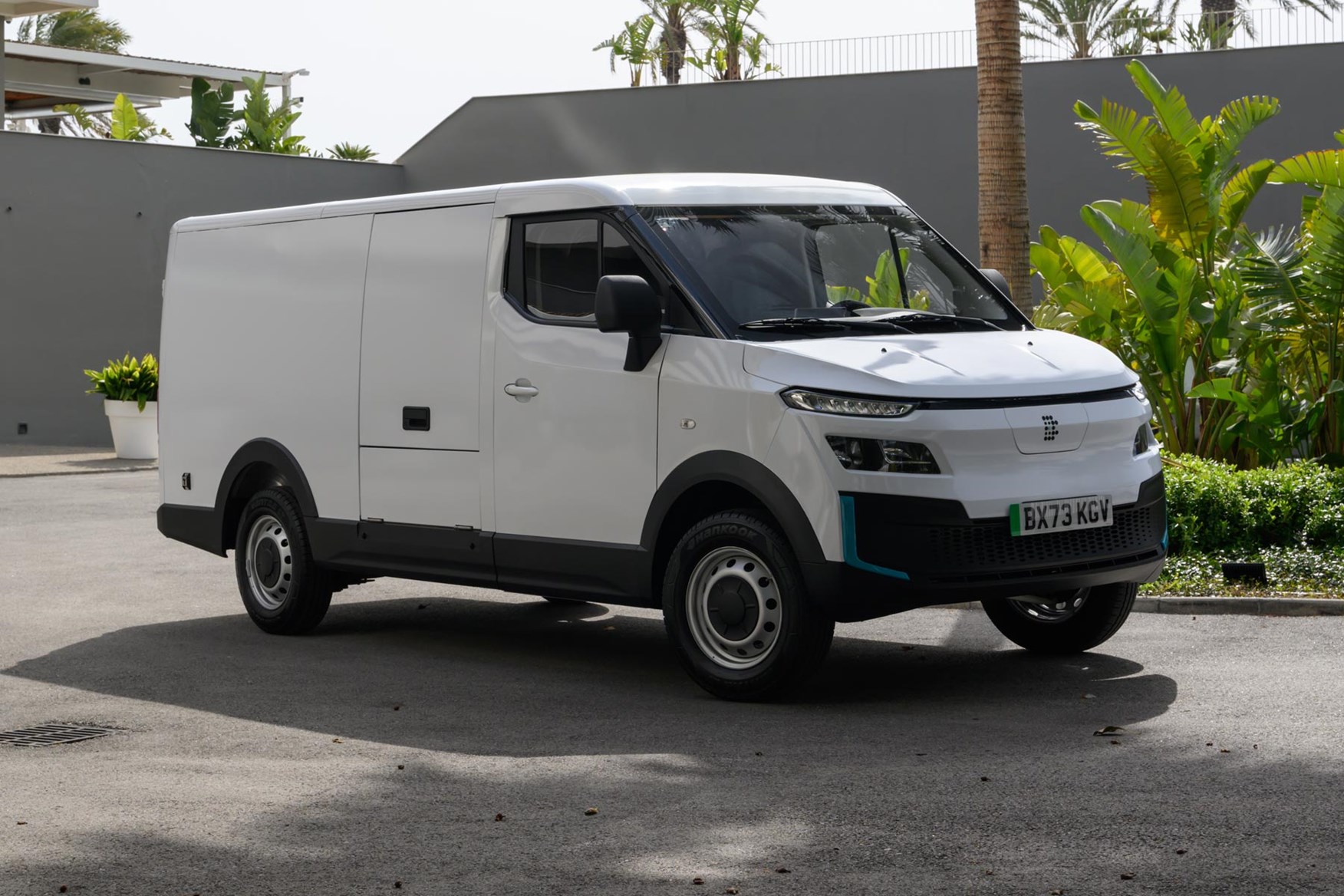
It is also a two-stage process that requires you to reach up and then down again, and you will have to open both parts if you want to slide heavier items out as there is a notable lip if you leave the bottom part shut. This takes valuable extra seconds and closing it is much more of a faff than simply sliding a door shut as you jump back into the cab.
B-On says that you will at least be able to get the door on the left-hand side of the vehicle in the UK – the vans we drove were European and left-hand drive and therefore had the door on the right.
What is good is that the loading bay comes pre lined, so you don’t have to factor in extra expense to protect the metalwork or the contents.
- Pricing still TBC
- Electric range not the best in class
- Several unknowns
At the time of writing, the final pricing has not been set for the B-On Pelkan, although company bosses are keen to stress that it is aiming for it to be one of its key selling points, without being disruptive to the market.
Something in the region of £30,000 (not including VAT) would be a realistic starting point, with the bigger battery adding another couple of thousand to the figure.
B-On Pelkan range and charging
Given that vans are starting to make big strides when it comes to their maximum electric range, the Pelkan is slightly below average on this front. It might be lightweight, but it still only offers a maximum range of 173 miles for the 54kWh version. The smaller battery manages slightly less with a maximum range of 140 miles.
This is some way short of the competition, many of which are starting to hover around the 200-mile mark or above.
Fast charging is available too, with B-On claiming you can charge on a DC connection at speeds of up to 100kW/h, which should result in the van going from 30 to 80% in 35 minutes. On a slow charger, it should be possible to get the larger battery from 0-100% in just under 10 hours, so an overnight charge should suffice.
B-On Pelkan servicing
Because B–On is such a new company in the UK, this works in its favour in some senses. As an example, the company’s engineering team in the UK is working on a program to determine the best service regime and intervals. So while in one sense it is still TBC, B-On has not simply plucked a number out of a hat.
B-On Pelkan standard equipment
In a bid to keep things simple, there is only going to be one version of the Pelkan, with pretty much everything included as standard. There will be bits that you can add on, but largely on the basis of individual negotiation with B-On depending on what is possible and how many you are buying. This includes features such as the removal of the front passenger seat or the addition of a load-through hatch – both are possible but aren’t offered as an option as yet.
B-On Pelkan standard specification highlights:
- Air conditioning
- Steering-wheel-mounted controls
- Driver’s armrest
- 10-inch touchscreen
- DAB digital radio
- Apple CarPlay/Android Auto
- Bluetooth and two USB-A connections
- Reversing camera and rear parking sensors
- Telematics
- Full-size spare wheel
We often say that there is a big unknown around a new van, but this couldn’t be more true with the Pelkan. Granted it is not an entirely new vehicle, with it having been on sale in China for several years before it makes it to the UK, but it hasn’t been tried and tested in a European market.
B-On is in the process of building its network, and as it is looking to establish its reputation it is likely to want to make a good impression so early customers might well get close attention. That isn’t the same as having a nationwide network of service centres staffed with thousands of technicians though.
- Lacking by modern standards
- Only driver gets an airbag
- No driver assistance tech
The Pelkan is somewhat behind the majority of the medium-van class when it comes to safety, certainly when you look at the equipment offered. There are only a few basic features and not much in the way of drive aids.
B-On Pelkan safety
You get a driver’s airbag in the Pelkan, but not a lot else. There is no ‘bag on the passenger side even. You get rear parking sensors and a reversing camera, but that is about it on the driver aids’ side of things. Certainly there is no blind-spot indication or lane keep assist and the like.
There isn't much in the way of dedicated security kit either with no alarm to speak of, even as an option.
Which B-ON Pelkan is best for me?
There are only the two battery options to pick from, so it’s a case of weighing up whether you want to go a max of 140 miles or 173 miles and if the extra cost is justified. The payload on both is outstanding, so you don’t lose out on the Pelkan’s main USP either way.
The other option is to look at a rival van that might cost a bit more but will be supported by a more comprehensive dealer network, have a greater range and a more sophisticated cabin and driving experience.










